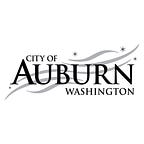So how’d your neighborhood end up in Auburn?
The City of Kent acquired the area known as the Bridges several decades ago. When they acquired the property it was in a predominantly natural state and intended to be used for City of Kent municipal utility purposes. At that time the property was not located inside the Kent city limits nor had Auburn annexed Lea Hill. Over the course of the ensuing several years the land was annexed into the City of Kent and sold to a private developer who subsequently filed development applications with the city. Those development applications span a period of 2004 to 2010. Meanwhile, in 2008 the City of Auburn annexed Lea Hill (which had formerly been designated as unincorporated King County). The Lea Hill annexation resulted in the Bridges community being surrounded by the City of Auburn.
The City of Kent approved development plans that allowed for a 386-unit single family subdivision, a network of open space areas designed to protect wetlands, and an 81,000 square foot senior care facility, 52,000 square feet of retail, and 24,000 square feet of office to be located on the 13.31-acre undeveloped parcel at the southeast corner of the property. The City of Kent proceeded to oversee the construction of the roads, utilities, common area tracts, and 386 single family homes. The 13.31-acre site remains undeveloped, but developable.
In 2019 the City of Kent approached the City of Auburn with a request to begin dialogue about transitioning the Bridges community into Auburn. While this change is easy to execute on a map there were a variety of other discussion topics that needed to be sorted out in order for the discussion and process to move forward. And while it took more than 4 years to complete, the cities enjoyed a very cooperative and constructive dialogue as we worked through all of the details. What kind of details make this complicated, here are a few examples:
- Transferring physical assets from one city to another (e.g. roads, street lights, property, stormwater pipes). Auburn and Kent have different engineering design standards for these types of features so it was important to have a full inventory of all assets. For example, if a street light burns out in the Bridges and you call to notify us, we don’t want to learn that we don’t have the right type of light bulb. It was also important for Auburn to be sure that public streets and sidewalks weren’t deficient, stormwater ponds not maintained or filters not replaced, or that the bridge within the community was deficient.
- Developing the zoning and land use regulations that would need to exist. Kent has different rules than Auburn. Auburn needed to modify its rules in order to ensure that structures and uses did not become “non-conforming” and to ensure that there is equity within the community. For example, if Kent has a building setback of 5 feet and Auburn’s setback is 7 feet, Auburn did not want homes in the Bridges to no longer conform. This may not seem like a big deal if your house is already there and you don’t have any plans to add a deck or shed, but it becomes a big deal when someone has a property improvement idea they would like to carry out.
- Coordination with emergency services, the County Elections Office, County Assessor and others. This includes ensuring that 911 operators are properly dispatching police, fire and aid calls. And that Auburn Police and Valley Regional Fire Authority are responding instead of Kent Police and Puget Sound Fire. And we want to be certain that residents of the Bridges receive the correct election ballots given that you will be represented by different city councilmembers/mayor and to vote on the school, fire, and other propositions and levies. And that your property taxes are reflective of the change in municipality.
